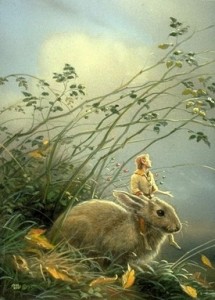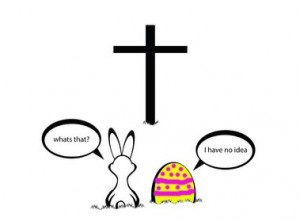 This year, Spring begins with the vernal equinox, when the sun enters the sign of Aries on March 20 at 10:30 am EDT. The word equinox is derived from the Latin words meaning “equal night.” Days and nights are approximately equal everywhere and the Sun rises and sets due east and west. Some early pagans celebrated the return of Spring with a festival in tribute to their Goddess of fertility and springtime, Eastre or Ostara. Folk stories of the Easter Rabbit began in pre-Christian fertility lore. The Goddess Eastre, was sometimes represented with a woman’s body and a rabbit’s head. One popular legend says Eastre found a bird, wounded, on the ground late in winter. To save its life, she transformed it into a hare. But “the transformation was not a complete one. The bird took the appearance of a hare but retained the ability to lay eggs… the hare would decorate these eggs and leave them as gifts to Eastre.” Enter the Easter Bunny. The egg is a symbol of fertility and rebirth, of new life. It stands for the renewing power of nature. The egg can also symbolize regeneration in a spiritual or psychological sense.
This year, Spring begins with the vernal equinox, when the sun enters the sign of Aries on March 20 at 10:30 am EDT. The word equinox is derived from the Latin words meaning “equal night.” Days and nights are approximately equal everywhere and the Sun rises and sets due east and west. Some early pagans celebrated the return of Spring with a festival in tribute to their Goddess of fertility and springtime, Eastre or Ostara. Folk stories of the Easter Rabbit began in pre-Christian fertility lore. The Goddess Eastre, was sometimes represented with a woman’s body and a rabbit’s head. One popular legend says Eastre found a bird, wounded, on the ground late in winter. To save its life, she transformed it into a hare. But “the transformation was not a complete one. The bird took the appearance of a hare but retained the ability to lay eggs… the hare would decorate these eggs and leave them as gifts to Eastre.” Enter the Easter Bunny. The egg is a symbol of fertility and rebirth, of new life. It stands for the renewing power of nature. The egg can also symbolize regeneration in a spiritual or psychological sense.
 The ritual of colouring Easter eggs stems from the tradition of painting eggs in bright colours to represent emerging from the darkness of winter to the sunlight of spring. Eostre is “associated with the coming of spring and the dawn, and her festival is celebrated at the same time as Christian observance of the Resurrection of Christ, and in the Jewish faith, Passover. The holiday is a celebration of spring and growth, the renewal of life that appears after the winter.
The ritual of colouring Easter eggs stems from the tradition of painting eggs in bright colours to represent emerging from the darkness of winter to the sunlight of spring. Eostre is “associated with the coming of spring and the dawn, and her festival is celebrated at the same time as Christian observance of the Resurrection of Christ, and in the Jewish faith, Passover. The holiday is a celebration of spring and growth, the renewal of life that appears after the winter.
Goddess of fertility and new beginnings, we take this opportunity to embrace Eostre’s passion for new life and let our own lives take the new direction we have wanted for so long. May your Spirit be renewed by the promise that every day is a new beginning.
RELATED: Ostara, a solitary ritual
